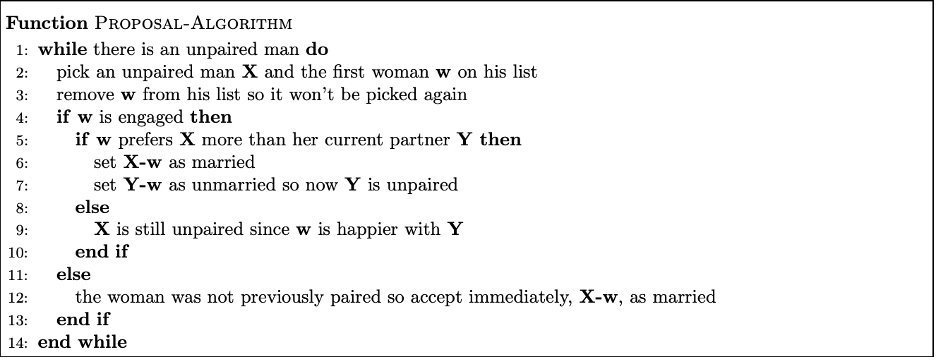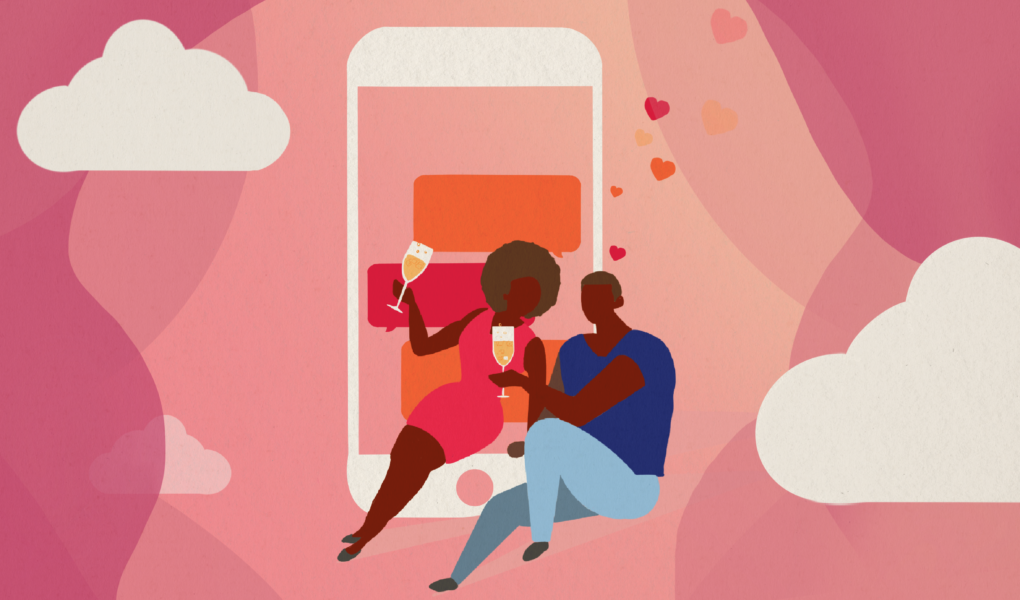Abstract
The advent of technology has reconfigured the way humans interact and form relationships. The democratization of digital dating technology has transformed complex courting processes into simple swipes and text messages. However, the majority of users are unaware of the internal rating system that assigns a “desirability” score for each user, which some argue depends on selective traits such as physical appearance. Algorithmic mechanisms also compute prospective matches deemed to yield the highest success rate, which has significant implications on real-life relationships that may entail. Online courting has undoubtedly expanded the pool of potential partners for users. Yet treating the system as a numbers game through pursuing as many mates as possible can often backfire. In fact, people in the slimmest dating markets, such as LGBTQ+ and middle-aged users, experience better results by narrowing their searches. Understanding the underlying algorithms behind match-making apps will allow users to deploy strategies that optimize dating technology and bring digital matches to life.
Introduction
Go up and introduce yourself. You mentally rehearse again to summon the courage to approach the stranger you are interested in. Yet you abort your mission as you reflect on few concerns: Is the person even single in the first place? Did we make eye-contact—a sign of mutual interest, or is it just wishful thinking? Rejection hurts, and a public one is much more poignant. How should I hide my humiliation if the task failed? You scorn these unknown variables and wish more information were available to inform your move. Lucky for you, with the advent of dating technology, this data can be literally at your fingertips.
The proliferation of online matchmaking has encoded a technological element into people’s love lives. Automated data collection and analysis allow dating algorithms to couple users with common interests, beliefs, and even inherent biases. Since less time is spent unearthing shared values and deal-breakers through trial-and-error exchanges, the sprouting of relationships has been accelerated and the enjoyment of the fruits of love prolonged. A swipe of the finger is a deceptively simple way to signal interest. Yet behind the “screens” are a myriad of algorithms that use computing brute force to generate compatible matches based on characteristics such as age, interests, beliefs, geography, etc. In addition to arranging similar pairs, dating programs also allow for people with entirely dissimilar activity patterns in real life to cross paths virtually. Although most people are not aware of it, the input of computer engineers who orchestrate code underlying dating apps has made it possible to dictate romantic output for users – configuring human attraction into simple swipes.
A History of Match Seeking
Although online courtship seems to be a novel practice, human beings have long broadcasted the desire for relationships that might have otherwise eluded our daily routines. Newspaper personal ads for British bachelors to advertise themselves first surfaced in 1695. Much like online bios today, men could publicize information to enhance their appeal, such as “possessing a very good estate.” One of the earliest suitors even shamelessly sought “some good young gentlewoman that has a fortune of £3,000 or thereabouts.” Online dating as we know it today was birthed in 1965 when a group of Harvard undergraduates pioneered Operation Match as the first machine-driven matchmaker. Users answered a survey for the computer to deduce a list of potential matches, setting precedent for the process standardized across most dating apps today. The Internet boom in the 1990s revolutionized every facet of human communication and romance was no exception. Match.com, the first .com dating platform to garner a sizable user base, was founded in 1995, and countless love search apps are still being developed today [5].
The Elo-ranking system – what is your “desirability” score?
With more than 57 million users, Tinder is a matchmaking behemoth that allows people to access a vast pool of prospective mates worldwide. On the app, every user is assigned an undisclosed internal rating as a measure of his or her “desirability.” The mechanism behind this mysterious score is termed the Elo-rating system. The Elo score, named after its inventor Arpad Elo, was created to calculate the skill levels of national chess players and is now widely employed in competitive sports rankings. The algorithm is predicated on probability:
Player A is given an initial rating a, and Player B is assigned b. Every time A and B compete, the ratings of both players are updated using the Υ (Upsilon) function. After the game, the loser relinquishes points to the winner (as denoted by the addition or deduction of the Y to player A’s original score):
If A beats B: a = a + Υ(a − b) and b = b − Υ(a − b)
If A loses to B: a = a – Υ(a − b) and b = b + Υ(a − b)
However, there is a caveat: the ranking system is weighted according to the player’s initial scores. A player with a higher beginning score inherently has a better chance of winning. Thus, if the player with the higher rating wins, only a few points will be transferred from the lower-ranked player. If the underdog prevails instead they will be allotted greater points [1].
On Tinder, the right swipes (“likes”) a user receives are likewise weighted. The more right swipes the person who expresses interest in you has, the more his or her acknowledgment will contribute towards your score. Chris Dumler, a Tinder data analyst, calls the app a “vast voting system… every swipe is in a way casting a vote: I find this person more desirable than this person” [2]. This voting mechanism generates valuable data for understanding profiles that are most attractive to the aggregate. Users with similar scores are also shown to each other more often. As a result, people on the same tier of “desirability” are conditioned to interact frequently, making matches more likely.
Is Tinder a “Hot-or-Not” system?
Imagine a young lad who just moved to a new area and is eager to change his bachelor status to “taken.” With the surging popularity of online dating, he decides to download Tinder in hopes of forming connections by means of destiny on the web’s courting arena. He is likely not pleased to discover Tinder’s employment of the Elo rating system, which generates an internal score that could be a detriment to his self-esteem. Unsurprisingly, the Elo grade sparked public outcry when users learned that an algorithm dictated their allure, and the supposedly randomized pairings of fate were, to some extent, engineered. Although physical appearance is not the only source of attraction for most people, it plays an undeniably prominent role in the direction a user swipes. The Tinder interface enlarges personal photographs with each updated version of the app. Moreover, with location and age preference being the only biographical fields required, users are not forced to elaborate on other attributes of their personality. Hence, critical voices label the app a superficial “hot-or-not” system that rewards those who are deemed conventionally attractive with higher scores.
The Gale-Shapley Theory – the Stable Marriage Problem
To rid their “hot-or-not” reputation, Tinder announced that it was parting with the Elo score in March of 2019. The app, having amassed large data archives of user activity, can make educated predictions on people’s preferences. The algorithm identifies and presents people with similar swipe histories to each other—if two users tend to like the same people, it can help identify future matches for each member of such a pair. This technique bears a resemblance to Hinge’s “Most Compatible Option.” Match, Tinder’s parent company, had acquired Hinge a month before the switch. The new matchmaking scheme takes its roots from the Gale-Shapley algorithm, commonly known as the stable-marriage problem. Economists Lloyd Shapley and Alvin Roth were awarded the Nobel prize in 2012 for the model. Applying the theory to derive match-making algorithms achieves stable allocations for a variety of market designs, such as the assignment of medical students to hospital appointments and customers to distributed internet providers [9].
The Gale-Shapley theory stipulates that when given equal sets, it is always possible to generate stable pairs. The model quantifies users’ rankings of each other as input and computes optimal matches that best satisfy the preferences of all participants. Dating apps being applied in real-life certainly cannot replicate frictionless conditions that exist in theory. For instance, the male-to-female user ratio that fluctuates constantly renders perfectly opposite sets impossible. Nevertheless, the Gale-Shapley algorithm buttresses online dating apps’ ability to produce compatible couples.
To decipher the stable-marriage problem, consider this hypothetical situation:
Imagine yourself as a matchmaker with female clients, denoted by the set [A, B, C, D], and male clients, denoted by the set [a, b, c, d]. You are tasked to arrange 4 stable marriages. Each man submits the names of the maidens listed in order of preference, and each woman similarly ranks the men. A marriage (M) is deemed stable when there are no dissatisfied pairs. For the couples a-D and b-C, if man D prefers woman b (the wife of another man) AND woman b also favors man D to C, both marriages will soon collapse. A duo is only unstable if both D and b choose to forgo their current mates for each other. If man D admires woman b, but she does not reciprocate, no dissatisfied pair is created — unrequited extramarital affection will still result in stable sets [4].
Woman A ranks: [d, c, a, b], which translates numerically to: [3, 4, 2, 1].
Man a ranks: [A, B, C, D], which can be interpreted as: [1, 2, 3, 4].
In the pair a-A, man a is delighted because woman A is his optimal wife. However, woman A may still pursue better options, such as men d or c. If both d and c would be more satisfied with A than their existing partners, A will prioritize d. Yet if man d is uninterested but man c is happy to oblige, c-A will emerge as a new stable pair
Presented below is a visual code solution beginning with a while loop:

Note: The problem assumes strictly monogamous and heterosexual pairs [6].
Men will propose to their next most desired mate at each subsequent iteration. Ladies accepting bids have the opportunity to “up-change” for a better partner, making this a greedy algorithm for women. This female-serving feature is not a flaw in the program, but a factor that reflects reality: the proportion of male-to-female is 62:38 on Tinder, and the Bumble app only permits women to message first (sorry, gentlemen) [8]. Participants that are in less “demand” in the aggregate market (frequently positioned at the lower range of other suitors’ lists) will have to endure more reiterations before exiting the loop of possible rejection. As comedian Matt Moore sardonically puts it: “It’s a new way to get rejected – Mathematics!” [7].
Is online dating a numbers game?
Algorithms such as the Elo-score and Gale-Shapley theory have expedited matchmaking with a sizable pool of potential partners. If that is the case, will using brute force to pursue a large volume of accounts yield more matches? If you think escaping the love quest loop is a numbers game, think again. The virtual world is the domain for dating app users. Yet, the ultimate goal for Tinder and its ilk is to turn online matches into messages, followed by first dates and perhaps even marriages—to transform swipes into real relationships. Dating algorithms track phone number exchanges and planned rendezvous to identify users who genuinely want connections to materialize. To quash flippant swipers, the system even limits right swipes to 100 per day and begins to recycle profiles when the “like” button is abused [8].
Although online dating is stereotyped to be populated with superficial users, people with targeted pursuits are in fact the biggest beneficiaries. According to Stanford sociologist, Michael Rosenfeld, middle-aged and LGBTQ+ singles experience more hardships finding compatible counterparts offline. Rosenfeld’s data found middle-aged users to dominate online dating platforms and that 67% of gay relationships were initiated online (compared to 22% for heterosexual couples) [3]. Online courtship, bounded only by the reaches of the Internet, has expanded the selection of prospective mates for people in the thinnest dating markets.
Strategies to optimize online dating algorithms
Dating, even if augmented with mathematical algorithms, is not a numbers game. As the Gale-Shapley theory demonstrates, the best options are elected upfront when we swipe left and right through the computer-generated list. This implies that the next choice will always be inferior to the one just presented. As a user’s list of potential partners dwindles with excessive swiping behavior, matchmakers like Tinder, Bumble, and OkCupid will begin to recycle selections [8]. Senior research fellow in biological anthropology at the Kinsey Institute and chief scientific adviser for Match.com Helen Fisher argues that cognitive overload from the ease of online wooing hampers the formation of actual relationships: “the brain is not well built to choose between hundreds or thousands of alternatives.” According to her findings, users should avoid building a cache of likes and limit swipes at the threshold of nine matches – the highest number of decisions the average human brain is equipped to process at one time [8].
Conclusion
Human attraction has long been portrayed as a primordial and enigmatic force—unruly and immeasurable. On the other hand, dating technology has introduced formulaic expressions to derive logical answers to our quest for love. Users are presented with a much larger pool of potential mates and can pursue many or few people at their discretion. For singles who wish for a swipe to become reality, it is important to behave realistically with the technology at their disposal. Online dating apps, although revolutionary, continue to mirror the mechanisms of real-world courtship. Hinge’s matchmaking algorithm is appropriately named the “Most Compatible Option” and not the “Most Idealistic Option,” and the Gale-Shapley algorithm is purposed to arrive at stable relationships. Chasing ideal profiles and swiping superfluously will indeed make arithmetical systems “a new way of getting rejected” [7]. Yet for those who optimize technology by courting wisely, not widely, matchmaking algorithms can be an innovative and mathematically robust way to cultivate human connections—one thoughtful swipe at a time.
References
- D. Aldous, “Elo Ratings and the Sports Model: A Neglected Topic in Applied Probability?,” Statistical Science, vol. 32, no. 4, pp. 616–629, Mar. 2017.
- A. Carr, “I Found Out My Secret Internal Tinder Rating And Now I Wish I Hadn’t,” Fast Company, 10-May-2017. [Online]. Available: https://www.fastcompany.com/3054871/whats-your-tinder-score-inside-the-apps-internal-ranking-system. [Accessed: 12-Mar-2020].
- R. Ferdman, “How well online dating works, according to someone who has been studying it for years,” The Washington Post, 23-Mar-2016. [Online]. Available: https://www.washingtonpost.com/news/wonk/wp/2016/03/23/the-truth-about-online-dating-according-to-someone-who-has-been-studying-it-for-years/. [Accessed: 12-Mar-2020].
- W. Hunt, “The Stable Marriage Problem – West Virginia University,” Lane Department of Computer Science and Electrical Engineering. [Online]. Available: http://community.wvu.edu/~krsubramani/courses/fa01/random/lecnotes/lecture5.pdf. [Accessed: 12-Mar-2020].
- S. Lee, “The History of Online Dating From 1695 to Now,” HuffPost, 07-Dec-2017. [Online]. Available: https://www.huffpost.com/entry/timeline-online-dating-fr_b_9228040. [Accessed: 11-Mar-2020].
- A. Osipenko, “Gale–Shapley algorithm simply explained,” Medium, 26-May-2019. [Online]. Available: https://towardsdatascience.com/gale-shapley-algorithm-simply-explained-caa344e643c2. [Accessed: 12-Mar-2020].
- “The 15 funniest quotes about online dating,” The Telegraph, 20-Mar-2016. [Online]. Available: https://www.telegraph.co.uk/men/relationships/the-15-funniest-quotes-about-online-dating/twitter/. [Accessed: 12-Mar-2020].
- K. Tiffany, “How the Tinder algorithm actually works,” Vox, 18-Mar-2019. [Online]. Available: https://www.vox.com/2019/2/7/18210998/tinder-algorithm-swiping-tips-dating-app-science. [Accessed: 12-Mar-2020].
- B. M. Maggs and R. K. Sitaraman, “Algorithmic Nuggets in Content Delivery – Akamai.” [Online]. Available: https://www.akamai.com/us/en/multimedia/documents/technical-publication/algorithmic-nuggets-in-content-delivery-technical-publication.pdf. [Accessed: 28-Apr-2020].




